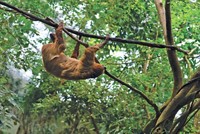Advertisement
Grab your lab coat. Let's get started
Welcome!
Welcome!
Create an account below to get 6 C&EN articles per month, receive newsletters and more - all free.
It seems this is your first time logging in online. Please enter the following information to continue.
As an ACS member you automatically get access to this site. All we need is few more details to create your reading experience.
Not you? Sign in with a different account.
Not you? Sign in with a different account.
ERROR 1
ERROR 1
ERROR 2
ERROR 2
ERROR 2
ERROR 2
ERROR 2
Password and Confirm password must match.
If you have an ACS member number, please enter it here so we can link this account to your membership. (optional)
ERROR 2
ACS values your privacy. By submitting your information, you are gaining access to C&EN and subscribing to our weekly newsletter. We use the information you provide to make your reading experience better, and we will never sell your data to third party members.
Analytical Chemistry
Spectroscopy Shines Light On Mold
Indoor Air Quality: A form of Raman spectroscopy swiftly identifies the fungi associated with health problems in damp buildings
by Janet Pelley
May 2, 2012

When fungi grow indoors, they can potentially trigger asthma, allergies, and respiratory infections. Different species have been linked to different health problems. But identifying the specific type of mold in damp buildings requires growing the organisms and over a day of lab analysis. Now researchers have found that, with a spectrometer, they can identify in real time the microscopic fungi that may trigger allergies and asthma, promising to cut the time and expense of testing for mold (Environ. Sci. Technol., DOI: 10.1021/es203782j).
Sutapa Ghosal, an analytical chemist at the California Department of Public Health, works with Raman microspectroscopy, a technique that shoots a laser beam at an object, in this case a fungal spore, to identify its chemical components. The spore scatters light from the beam in a characteristic pattern of wavelengths and intensities, creating a spectral signature.
Ghosal and her colleagues created a library of such signatures for eight species of fungi commonly found in damp buildings, including Aspergillusversicolor and Penicillium brevicompactum, two species that indicate indoor contamination. The scientists then employed visual comparison and a computer program to identify, based on their spectral signatures, spores they had collected using an air sampler in the laboratory. These identifications took at most an hour.
“In the future, we hope to identify signatures of spores collected right in the field using a handheld spectrometer equipped with a library of relevant signatures,” she says. The researchers hope to build that library to include 100 common species found in damp buildings.




Join the conversation
Contact the reporter
Submit a Letter to the Editor for publication
Engage with us on Twitter